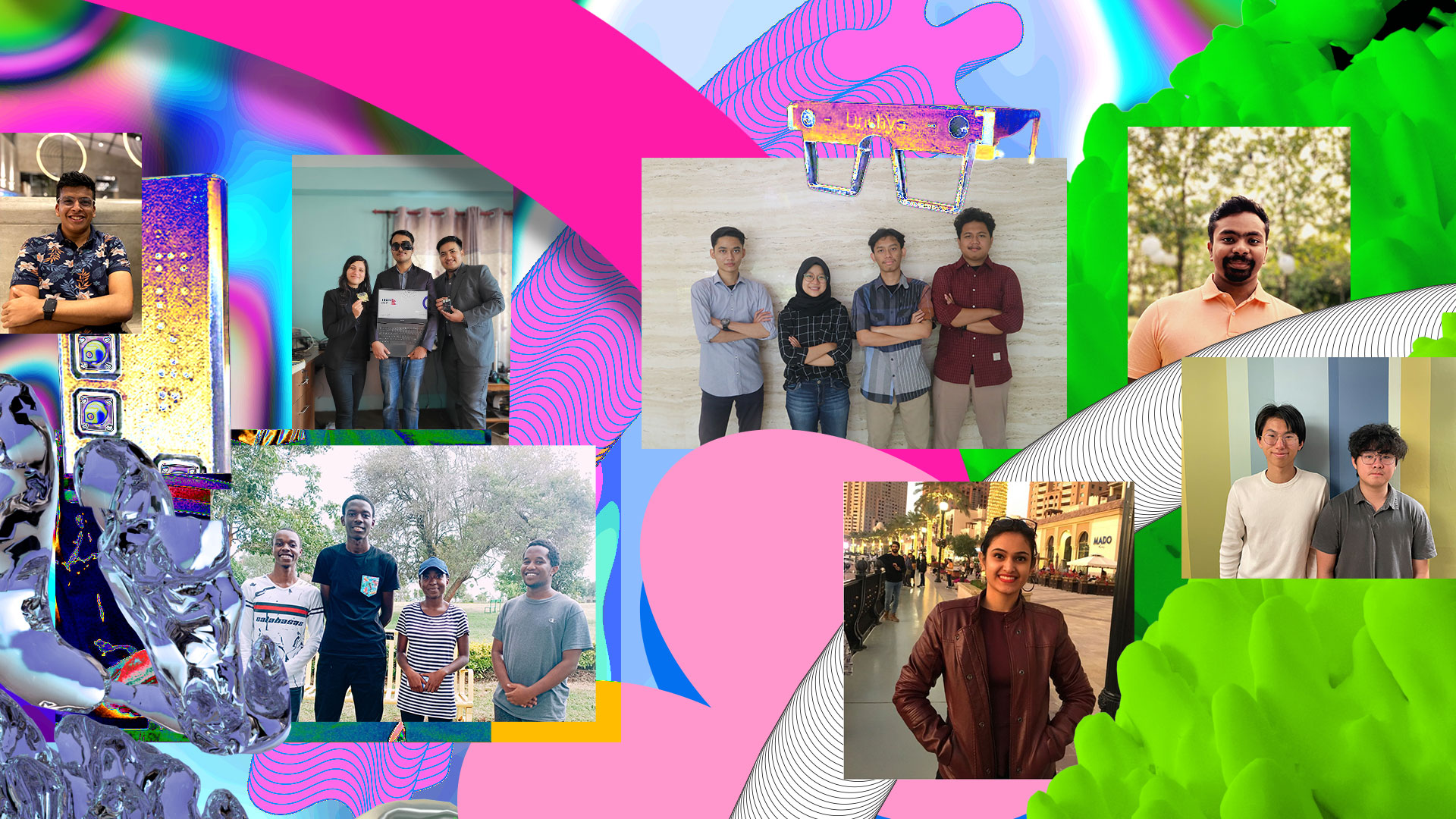
Students turn to AI for ideas to improve lives at this year’s Imagine Cup
Lakshmi Narke is motivated by the disease that killed her friend and claims the lives of 1.5 million people every year. Syntiche Musawu wants to help people like her brother, who struggles with isolation due to a condition that disrupts how his brain understands what he’s hearing. Tyler Kim knows the challenge of learning a new language and wants to make education more accessible.
All three students are among the thousands of participants in this year’s Imagine Cup, Microsoft’s global competition for students to dream and build new ways of using technology to improve lives. In its 21-year history, the annual event has drawn more than 2 million students from 160 countries to compete for prizes including cash, mentorship and training.
This year, much of the innovation energy revolves around AI, with the vast majority of students using it to spark ideas, from training AI models to detect diseases to using cognitive APIs to help people with disabilities.
“Students want to make the world better by addressing and eventually solving serious problems, and the availability of AI is empowering them to do it,” says Charlotte Yarkoni, Microsoft president of Commerce and Ecosystems, which includes student developer programs.
“The increase in AI-powered projects in Imagine Cup this year shows us the potential of AI — the students you see working with AI now could soon create the next innovation we can’t live without.”
Here’s a look at some of the teams using AI, including the top three teams — TAWI, Eupnea and CS-M Tool — who made it to the 2023 Imagine Cup World Championship. That event was held at Microsoft Build 2023 with TAWI named as the winner.
TAWI
Growing up in Congo, Musawu watched her younger brother struggle with an auditory processing disorder that affected his ability to comprehend speech, leading to difficulties in school and social isolation.
“My brother doesn’t feel confident to communicate if there is background noise, but I think we can help,” says Musawu, a computer science student at the United States International University-Africa in Kenya.
She and her team are now building an app called TAWI to help people with the disorder communicate more easily. It leverages speech recognition tools from Azure Cognitive Services and OpenAI Whisper to enhance speech, reduce background noise and transcribe speech to text in real time.
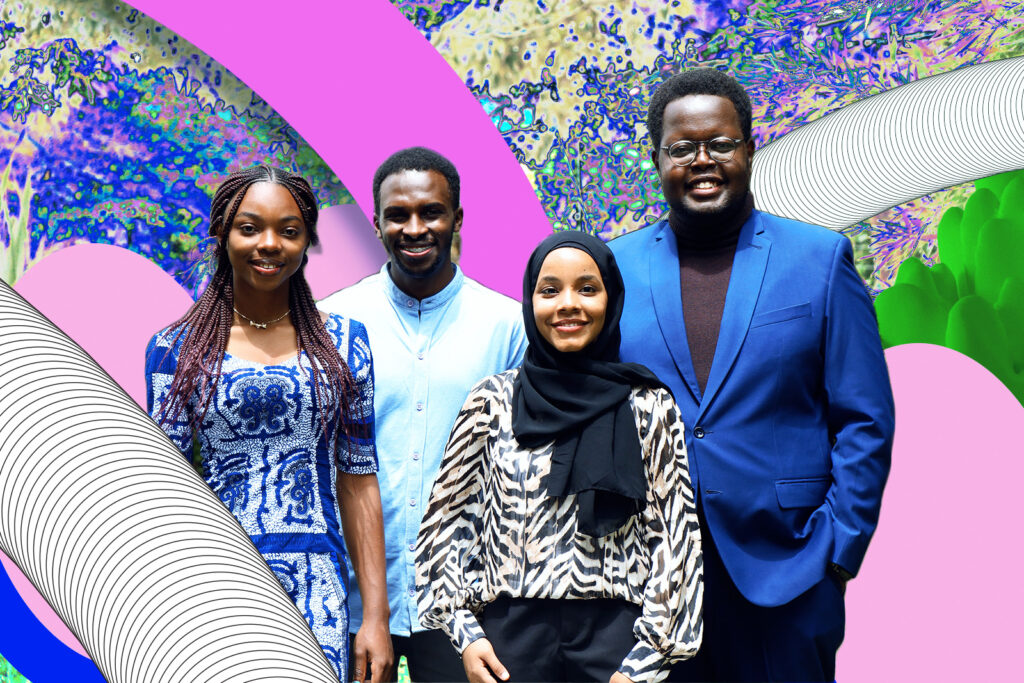
Users can connect the app to regular earphones, making the solution more affordable, accessible and discreet than traditional hearing aids. They can also read transcribed speech on their phone.
Focused on inclusivity, the team is working with AI models to process different languages, accents and background noise, from crosstalk and air conditioners to wind, rain and rural animals.
“We want to serve people in all kinds of environments and conditions,” whether they’re at school, in an office or living on a farm, says team member Zakariya Hussein Hassan.
Eupnea
Most tuberculosis (TB) deaths occur in countries with less accessible health care, causing delayed testing and treatment. A common skin test is particularly challenging as it involves two visits for an injection and a review a few days later.
Lakshmi Narke and her team hope their app, Eupnea, will encourage people to see a doctor earlier by quickly assessing a user’s risk for TB.
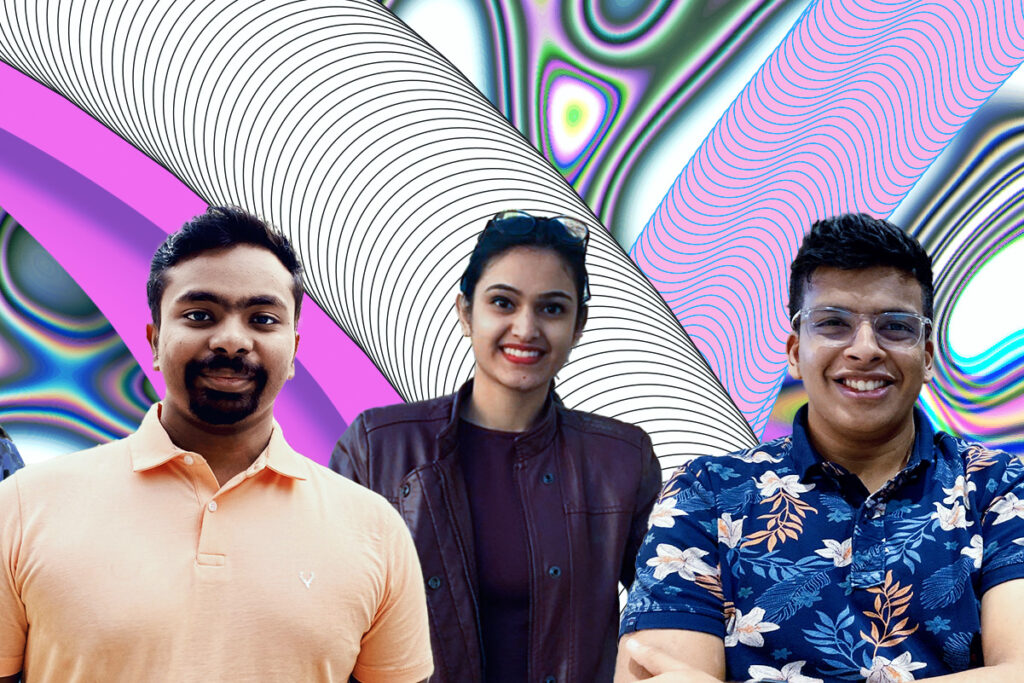
Users can photograph their injection site with a coin on their arm and Eupnea, powered by Azure Cognitive Services’ vision tools, calculates risk by measuring the size of the skin’s reaction with the coin as a reference, the students say. Another AI algorithm is designed to analyze a few seconds of coughing.
“AI can reduce the cost of making multiple trips to the doctor, who can review the results and save a life and limit exposure to other people,” says Chidroop Iyyhappan, a computer science graduate student at University of California, Irvine.
The team also wants to help people complete the long treatment required for TB through a gamified system and a community that pairs people for emotional support with Azure Machine Learning.
The students grew up in India, which has the world’s highest burden of TB and is where Narke’s friend passed away.
“We have lost friends and family to this disease and witnessed its impact on communities,” says Narke, also a computer science graduate student at UC Irvine. “With AI, we are trying to save lives one breath at a time.”
CS-M Tool
Cardiovascular diseases are the leading cause of death globally, but most are considered preventable, a challenge in low- and middle-income countries where health care and early detection are less accessible.
A team of high school students in Thailand is building a screening tool they say can help people check themselves for potential signs of heart disease. With a modified stethoscope connected to a phone, the CS-M Tool (short for Cardiac Self-Monitoring Tool) will be able to analyze a user’s heartbeat to provide risk levels for cardiovascular diseases, the team says. The students also plan to incorporate conversational AI to answer basic health questions.
Hosted on Azure, the tool is simple to use — place the stethoscope on the chest for 10 seconds and read the results. The team tested it in clinical trials with guidance from medical and engineering faculty at nearby Chiang Mai University.
“We believe our product has the potential to revolutionize health care access for individuals of all ages, particularly those in remote areas or with limited access to medical facilities,” says Tanapat Charunworaphan, head of the team and a student at The Royal Prince’s College, a secondary school.
Scraft
As writing tutors for English as a second language (ESL) students, Tyler Kim and Quan Tan know the struggle of writing well in another language. They also know that many people lack access to one-on-one tutoring.
To help more people, they created Scraft, a writing platform that gives thought-provoking prompts and immediate, personalized feedback through OpenAI’s ChatGPT-4 API, Azure Cognitive Services’ key phrase extraction and the Bing Web Search API. The students plan to optimize Scraft for ESL students by fine-tuning their AI models with user feedback and rubrics from English language proficiency exams.
“We believe writing education should be affordable and accessible and that generative AI is the key to the solution,” says Kim, a computer science student at Columbia University in New York.
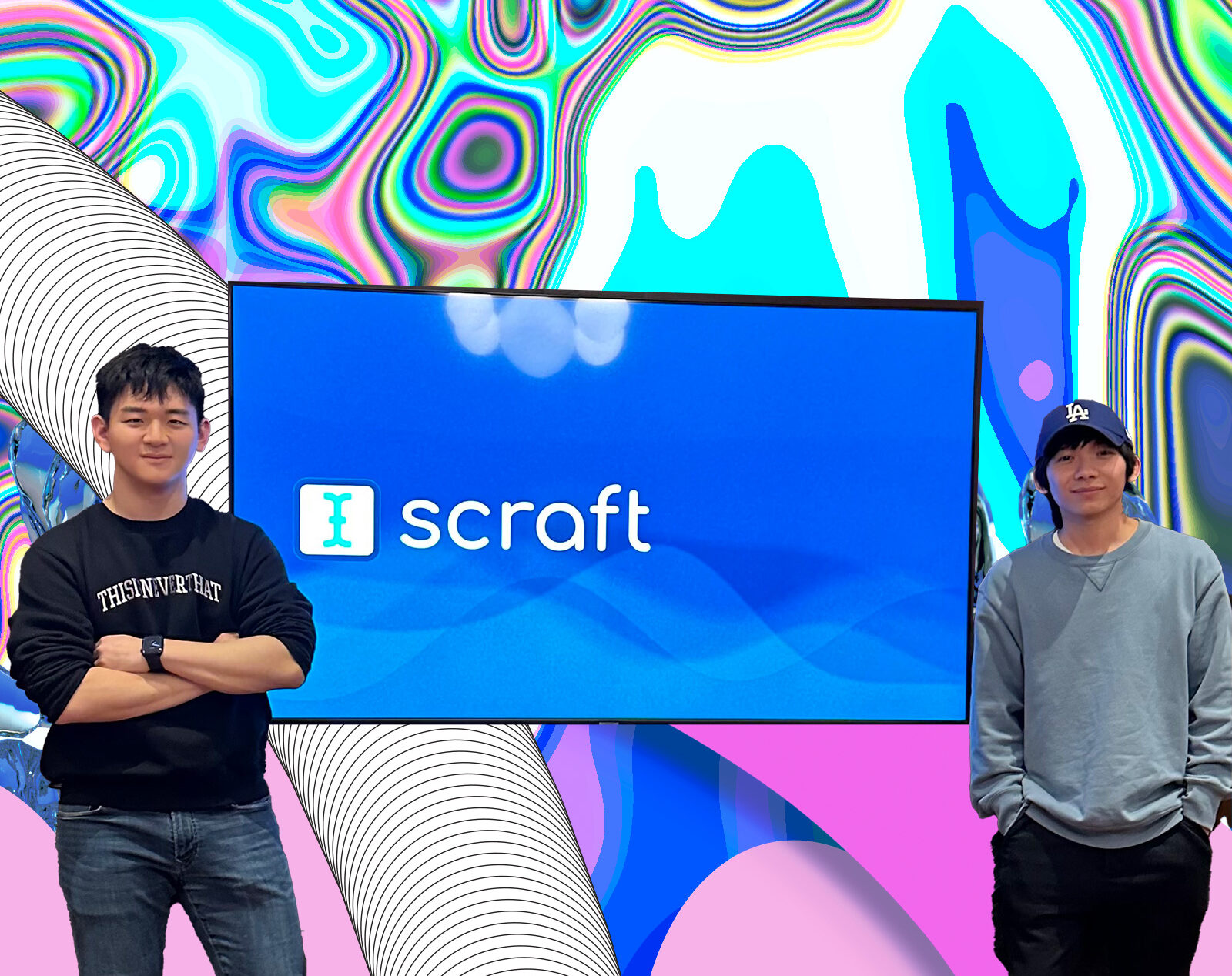
Scraft mimics a tutor who reads a draft, asks clarifying questions and explains feedback. It asks Socratic questions that prompt students to think critically on structuring ideas and making logical connections, on top of editing for basic grammar and punctuation. It customizes feedback based on a student’s writing goals, such as the type of tone or style they’re working on.
“We don’t want Scraft to spit out entire essays for students,” says Tan, a financial economics student at Columbia. “Instead, we give building blocks of questions and feedback to guide you throughout your writing.”
CAi
Students with the CAi team in Kenya are making a wearable device aimed at detecting seizures by sensing and analyzing heart rate, oxygen levels and muscle activity. Built with Azure Machine Learning, the device will alert a patient’s caregivers through text, as well as summon help from people nearby with lights or a buzzer, the students say.
Team member Mergery Wanjiru hopes CAi can help people like her mother, who has a condition that causes frightening episodes of seizure-like unconsciousness.
“When my mom was diagnosed, it was really hard for our family because we never knew when she was going to have an attack,” says Wanjiru, a mechatronic engineering student at Dedan Kimathi University of Technology in Kenya.
“When I told her about the device, she was pretty excited to try it out. She’s one of our greatest supporters.”
PNP
After watching a singer who is blind perform a show in Nepal, Banshaj Paudel knew he wanted to work on technology that helps people who are blind or have low vision. He and his colleagues with the Nepali team PNP are now building smart glasses designed to recognize objects, read text and describe the physical environment for people with a visual disability.
“We wanted to make a device that can make life easier and more accessible for people,” says Paudel, a computer applications student at Tribhuvan University in Nepal.
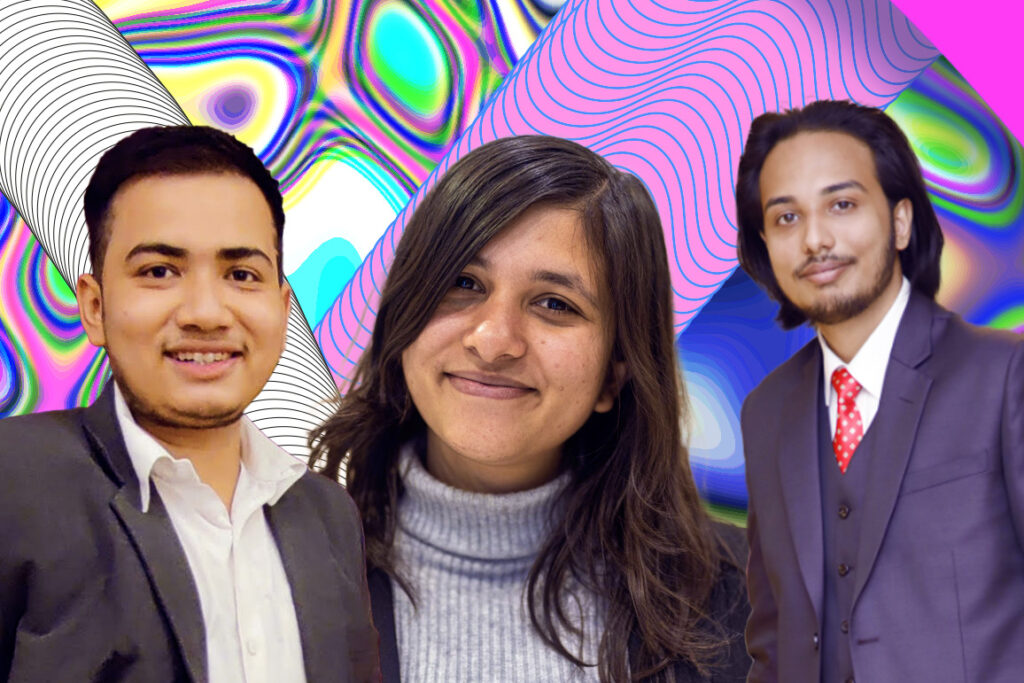
The glasses, called Drishya, have a speaker and two cameras for spatial analysis. A lightweight AI model in the device aims to identify objects without connectivity. Larger speech and vision models from Azure Cognitive Services will perform optical character recognition and scene description from the cloud, the team says. They’re also designing the glasses to connect with smart home devices.
The students say AI, used with science and other technologies, is an amplifier for creativity, problem-solving and endless possibilities.
“I’m fascinated by the ability of physics to explain the world around us. I’m amazed by how everything we see can be modeled to an approximation by a set of equations,” says team member Krishbin Paudel. “I’m always interested in creating what I can imagine.”
Watch a video of the 2023 Imagine Cup World Championship to see how the top three teams performed, and register now for Imagine Cup 2024.
Lead image: Student participants at Microsoft’s 2023 Imagine Cup
